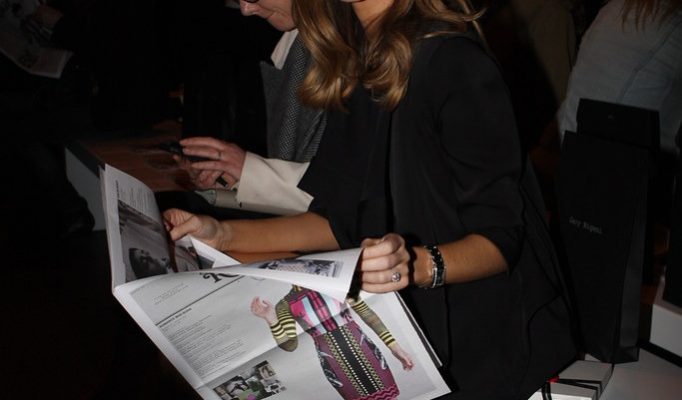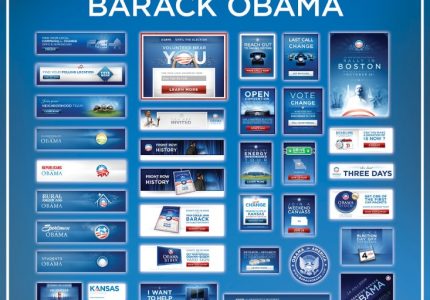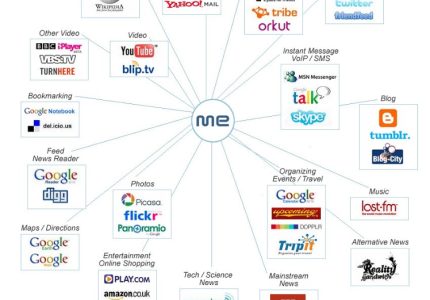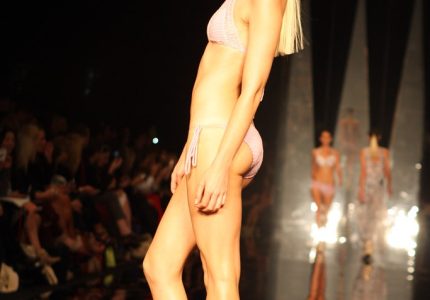Understanding the Importance of Fashion Website Design
Fashion website design plays a crucial role in establishing a strong online presence for clothing brands and designers. A well-crafted website not only showcases the latest trends and collections but also enhances user engagement and builds brand credibility. Understanding the importance of effective design can help fashion businesses attract more visitors, convert them into loyal customers, and stand out in a competitive digital marketplace.
Enhancing Brand Identity
Fashion website design plays a crucial role in establishing and enhancing a brand’s identity in the competitive online marketplace. An attractive, user-friendly website reflects the style, values, and uniqueness of the brand, helping it stand out among numerous competitors. Effective design elements such as high-quality images, cohesive color schemes, and intuitive navigation create a memorable experience for visitors, increasing engagement and loyalty. Moreover, a well-designed fashion website not only showcases products effectively but also conveys the brand’s story and personality, fostering an emotional connection with customers. Ultimately, investing in thoughtful website design is essential for fashion brands aiming to strengthen their presence, attract new audiences, and build a recognizable, trusted identity in the digital space.
Improving User Experience
Designing a fashion website is crucial for establishing a strong brand presence and attracting potential customers. A well-crafted design not only showcases the latest trends but also communicates the brand’s identity effectively. When users visit a fashion website, their first impression heavily depends on the visual appeal and ease of navigation.
Improving user experience is vital in fashion website design because it encourages visitors to stay longer and explore more. Clear menus, fast loading times, and mobile responsiveness create a seamless browsing experience. Incorporating high-quality images and engaging content helps showcase products attractively, making it easier for customers to find what they are looking for.
Ultimately, a thoughtfully designed fashion website enhances credibility and builds trust with shoppers. By prioritizing aesthetics and usability, brands can increase conversions, boost sales, and foster loyalty among their audience.
Boosting Conversion Rates
Effective fashion website design plays a crucial role in attracting visitors and converting them into loyal customers. A visually appealing and user-friendly layout helps showcase collections beautifully, making it easier for shoppers to find what they want. Engaging visuals, intuitive navigation, and clear calls-to-action guide users seamlessly through the shopping experience, increasing the likelihood of purchase. Additionally, a responsive design ensures the website looks great on all devices, catering to mobile shoppers who make a significant portion of online sales. Optimizing load times and providing a smooth browsing experience further reduce bounce rates and encourage longer site visits. Ultimately, investing in professional fashion website design can significantly boost conversion rates and drive business growth in the competitive online marketplace.
Key Elements of Fashion Website Design
Creating an engaging fashion website requires a keen focus on key design elements that attract and retain visitors. The visual appeal, intuitive navigation, and seamless user experience play vital roles in showcasing the latest trends and collections. Incorporating stylish imagery, modern layouts, and responsive design ensures the site appeals to fashion enthusiasts across all devices, ultimately enhancing brand identity and driving customer engagement.
Visual Aesthetics and Style
Key elements of fashion website design include an eye-catching visual aesthetic that reflects current trends and the brand’s unique identity. A well-designed fashion site should prioritize a clean layout that highlights images, allowing products or collections to stand out. Consistent style elements such as typography, color schemes, and imagery help establish a cohesive look and feel, conveying the brand’s personality effectively. Navigation should be intuitive, enabling visitors to browse collections seamlessly while maintaining an elegant and sophisticated appearance. Incorporating high-quality visuals, minimalist design principles, and a balanced use of whitespace enhances the overall aesthetic, creating a luxurious and engaging user experience that resonates with fashion enthusiasts.
Navigation and Usability
Effective fashion website design focuses on creating an attractive and engaging visual experience that captures the essence of the brand. A clean, modern aesthetic combined with high-quality images and cohesive color schemes helps attract visitors and encourage them to explore further. Navigation plays a crucial role in guiding users seamlessly through the site, making it easy to find categories, products, and essential information without frustration. Clear menus, logical layout, and accessible search options enhance usability and ensure visitors can quickly locate what they need. Additionally, user-friendly features such as intuitive filtering, mobile responsiveness, and fast loading times improve overall usability, providing a smooth shopping experience that encourages repeat visits and conversions. Ultimately, a well-designed fashion website balances visual appeal with practical navigation to engage users and support business goals effectively.
Responsive Design for Mobile Devices
Effective fashion website design combines aesthetic appeal with user-friendly functionality to attract and retain visitors. Key elements include a visually striking layout that showcases the latest trends and collections, clear navigation to help users find products easily, and high-quality images to highlight details and textures. Incorporating a consistent color scheme and typography enhances brand identity, while engaging content such as lookbooks, videos, and blogs creates a dynamic experience. Ensuring that the design aligns with current fashion industry standards and appeals to the target audience is essential for success.
Responsive design for mobile devices is a critical aspect of modern fashion website development. It ensures that the website adapts seamlessly to various screen sizes and device types, providing an optimal viewing experience. Techniques such as flexible grids, fluid images, and media queries allow elements to resize and reposition automatically. Mobile-friendly features include simplified navigation menus, touch-friendly buttons, and fast-loading pages to accommodate users on the go. Prioritizing mobile responsiveness enhances accessibility, boosts user engagement, and improves search engine rankings, making it vital for reaching a broader audience in the competitive fashion industry.
High-Quality Product Photography
Creating a compelling fashion website requires attention to several key elements that enhance user experience and showcase products effectively. High-quality product photography and thoughtful design elements work together to attract and retain visitors, encouraging them to explore and make purchases.
Key Elements of Fashion Website Design
- Visual Appeal: Use a modern, clean layout with a cohesive color scheme that reflects the brand identity.
- Navigation: Ensure intuitive and straightforward navigation to help users find products easily.
- Responsive Design: Optimize for all devices, including smartphones and tablets, for a seamless shopping experience.
- Fast Loading Times: Minimize page load times to prevent user frustration and reduce bounce rates.
- Clear Calls to Action: Use prominent buttons and links encouraging users to shop, view collections, or subscribe.
- Consistent Branding: Incorporate logos, fonts, and imagery that reinforce brand recognition.
- High-Quality Product Photography
High-Quality Product Photography
- Use professional lighting and backgrounds to highlight product details effectively.
- Capture multiple angles and close-up shots to provide comprehensive views of each product.
- Maintain consistency in style, lighting, and composition across all images for a unified look.
- Optimize images for web to ensure quick loading without sacrificing quality.
- Incorporate lifestyle images to help customers visualize products in real-life settings.
- Regularly update photos to showcase new collections and maintain a fresh, engaging website.
Consistent Branding and Color Scheme
In fashion website design, consistent branding and a cohesive color scheme are essential for creating a memorable and professional online presence. A unified branding strategy ensures that the website visually reflects the brand’s identity, including logo, typography, and imagery, providing visitors with a seamless experience. A well-chosen color scheme communicates the brand’s personality and appeals to the target audience, making navigation intuitive and engaging. Using consistent colors throughout the website reinforces brand recognition and builds trust with visitors. Balancing aesthetics with functionality, these elements work together to enhance user engagement and showcase the fashion products effectively.
Design Trends in Fashion Websites
Fashion website design continually evolves to reflect the latest trends and capture the attention of style-conscious audiences. Modern design trends emphasize sleek aesthetics, user-friendly navigation, and innovative visual elements that showcase collections effectively. Staying ahead in this dynamic industry requires websites to adopt fresh, engaging, and responsive layouts that enhance the overall shopping experience and brand identity.
Minimalist and Clean Layouts
Minimalist and clean layouts have become a dominant trend in fashion website design, emphasizing simplicity and sophistication to create an appealing user experience. These designs typically utilize ample white space, streamlined navigation, and a limited color palette to highlight the fashion products without unnecessary distractions. By focusing on high-quality imagery and clear typography, fashion brands can effectively showcase their collections in a visually compelling way. This approach not only enhances readability but also exudes elegance, aligning with modern aesthetic preferences. Additionally, minimalist layouts are highly versatile, ensuring compatibility across various devices and screen sizes for seamless browsing. Ultimately, embracing clean designs allows fashion websites to convey a sense of luxury and sophistication while ensuring visitors are guided effortlessly through their virtual storefronts.
Interactive Elements and Animations
Fashion website design is continually evolving to capture the attention of modern consumers, with a strong emphasis on visual appeal and user engagement. Incorporating innovative design trends ensures that sites stand out in a competitive digital landscape. Key trends include the use of bold typography, minimalistic layouts, and vibrant color schemes that reflect current fashion aesthetics.
Interactive elements play a crucial role in creating an immersive browsing experience. Features such as swipable lookbooks, quick zoom functions on product images, and interactive size charts enable users to engage more deeply with the content. Personalized shopping experiences driven by filters and AI-powered recommendations further enhance user satisfaction.
Animations are increasingly used to add dynamism and storytelling to fashion websites. Subtle hover effects, animated transitions between pages, and micro-interactions guide visitors seamlessly through the site while highlighting key products or promotional offers. These animated elements not only improve usability but also convey the brand’s personality in a memorable way.
Personalization and Customization Features
In the realm of fashion websites, staying updated with the latest design trends is essential to engaging visitors and showcasing collections effectively. Personalization and customization features have become pivotal, offering users tailored experiences that resonate with their individual style preferences. Incorporating these elements enhances user engagement, encourages longer site visits, and boosts conversion rates.
- Responsive and Adaptive Layouts: Ensuring that the website looks appealing across all devices, providing a seamless experience for users browsing on smartphones, tablets, or desktops.
- Minimalist Design with Bold Visuals: Using clean layouts complemented by high-quality images and impactful typography to highlight fashion items and brand identity.
- Interactive Features: Integrating elements like virtual fitting rooms, 3D product views, and style quizzes to involve users actively in their shopping journey.
- Personalized Content Recommendations: Utilizing user browsing history and preferences to suggest products, creating a customized shopping experience.
- Customizable Features: Offering options such as choosing color schemes, creating personalized wishlists, or customizing product details to cater to individual tastes.
- Focus on Sustainability and Ethical Practices: Displaying transparent information about sourcing and sustainability, aligning with modern consumers’ values and preferences.
- Integration of Social Media and User-Generated Content: Showcasing customer photos and reviews to build community engagement and authenticity.
- Use of Trend-inspired Typography and Color Palettes: Reflecting current fashion aesthetics through contemporary fonts and vibrant, trendy color schemes.
Integration of Social Media
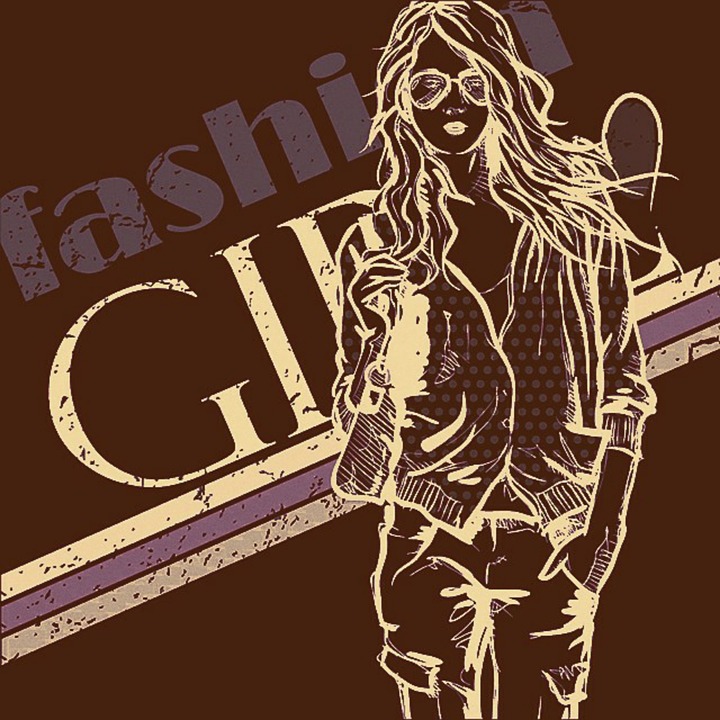
Fashion websites are continually evolving to capture the attention of modern audiences, with design trends emphasizing bold visuals, minimalist aesthetics, and user-centric layouts. Incorporating large, high-quality imagery and dynamic animations helps showcase collections effectively and engage visitors. Integration of social media plays a crucial role by embedding feeds, sharing buttons, and interactive elements that encourage user participation and expand brand reach. Seamless social media connectivity allows users to explore the brand’s presence across platforms like Instagram, Pinterest, and TikTok directly from the website, fostering a cohesive digital experience. Ultimately, combining contemporary design trends with strategic social media integration enhances brand visibility, boosts engagement, and drives sales in the competitive fashion industry.
Technical Considerations for Fashion Website Design
Designing a fashion website involves careful attention to technical considerations that enhance user experience and showcase products effectively. Key factors include responsive layout to ensure seamless viewing across devices, optimized loading speeds to keep visitors engaged, and high-quality visuals that accurately represent clothing and accessories. Additionally, implementing intuitive navigation, secure payment systems, and scalable infrastructure are essential to support growth and maintain a smooth shopping experience for customers.
Website Speed Optimization
Optimizing website speed is crucial for a fashion website to enhance user experience and increase conversion rates. Fast-loading pages reduce bounce rates and keep visitors engaged, encouraging them to explore products further. To achieve this, it is important to optimize images by compressing file sizes without sacrificing quality, utilize browser caching, and minimize the use of heavy scripts and plugins that can slow down load times. Additionally, employing a content delivery network (CDN) helps distribute content efficiently across different geographic locations, leading to faster load times for users worldwide. Ensuring a clean, streamlined code structure and leveraging modern web technologies like lazy loading and asynchronous scripts also contribute significantly to overall website speed. A well-optimized site not only improves user satisfaction but also positively impacts search engine rankings, making it a vital aspect of fashion website design.
SEO Best Practices
When designing a fashion website, technical considerations play a crucial role in ensuring a seamless user experience and optimized performance. Responsive design is essential to make the site adaptable across various devices and screen sizes, enhancing accessibility for all users. Fast load times can be achieved by optimizing images, leveraging browser caching, and minimizing code to reduce bounce rates and improve search engine rankings. Additionally, implementing a clean, organized code structure facilitates easier maintenance and scalability.
SEO best practices are vital for increasing visibility and attracting the target audience. Conducting thorough keyword research and integrating relevant keywords naturally into titles, headers, and content help improve search engine rankings. Proper use of meta tags, including meta descriptions and alt texts for images, enhances the site’s crawlability and accessibility. Creating a logical URL structure, integrating schema markup, and ensuring mobile-friendliness are also critical factors that can positively influence search rankings and user engagement.
Secure Payment Gateway Integration
When designing a fashion website, ensuring secure payment gateway integration is crucial to provide a safe shopping experience for customers. Balancing aesthetic appeal with technical robustness helps build trust and encourages transactions. Proper integration involves several technical considerations to maintain security, functionality, and user convenience.
- Encryption Standards: Implement SSL/TLS protocols to encrypt sensitive data during transmission, safeguarding customer information from interception.
- Payment Gateway Compatibility: Choose gateways that support multiple payment methods such as credit cards, e-wallets, and alternative payments suitable for your target audience.
- API Security: Use secure API integrations, including authentication mechanisms like OAuth, to prevent unauthorized access and ensure transaction integrity.
- Compliance with Standards: Ensure adherence to PCI DSS (Payment Card Industry Data Security Standard) requirements to handle credit card transactions securely.
- Fraud Detection and Prevention: Integrate fraud detection tools and real-time monitoring to identify suspicious activities and mitigate risks.
- User Experience: Design intuitive checkout processes with clear instructions, minimal steps, and visible security badges to increase customer confidence.
- Mobile Compatibility: Optimize the payment process for mobile devices, supporting responsive design and mobile-friendly payment options.
- Testing and Validation: Regularly test all payment pathways for vulnerabilities, bugs, and performance issues to ensure seamless transactions.
Content Management System Selection
Selecting the appropriate Content Management System (CMS) is crucial for effective fashion website design, as it influences the site’s functionality, flexibility, and scalability. A suitable CMS should support high-quality image galleries, product catalogs, and seamless e-commerce integration to showcase fashion collections elegantly. Compatibility with responsive design frameworks ensures the site performs well across various devices, enhancing user experience. Additionally, the CMS should offer strong SEO capabilities, customizable templates, and user-friendly content editing tools to streamline updates and maintain a fresh, trendy appearance. Security features and scalability options are also vital considerations, allowing the site to grow and adapt to emerging fashion trends and increasing traffic without compromising performance.
Strategies for Effective Fashion Website Branding
Creating a compelling fashion website requires a strategic approach to branding that captures the essence of the brand and appeals to the target audience. Effective branding strategies help establish a memorable identity, distinguish the website from competitors, and foster customer loyalty. From visual aesthetics to user experience, every element plays a vital role in conveying the brand’s personality and values. Implementing thoughtful branding techniques ensures that the website not only showcases fashion products but also creates an emotional connection with visitors.
Consistent Visual Identity
Creating a compelling fashion website requires a strong and consistent visual identity that resonates with your target audience. Implementing effective branding strategies involves establishing a cohesive aesthetic across all platform elements, including color schemes, typography, imagery, and layout design. Consistency in visual presentation helps build brand recognition and trust, making your website memorable and professional.
To achieve this, start by defining your brand’s core visual elements. Choose a color palette that reflects your brand’s personality and appeals to your audience. Select typography that complements your style and ensures readability across devices. Use high-quality images and photography that convey your brand’s unique voice and aesthetic, maintaining a uniform style in lighting, filters, and composition.
Maintain consistency by applying these visual elements uniformly throughout your website, from homepage to product pages and blog content. Create style guides or branding manuals to ensure that all designers and content creators adhere to the same standards. Incorporate branded elements, such as logos and icons, seamlessly into your design to reinforce brand identity.
Additionally, integrating storytelling through your visuals can strengthen your brand message. Use lifestyle images and fashion spreads that reflect your brand’s style and values. Regularly update visuals to stay current while preserving the core visual language, helping your brand remain relevant yet recognizable in the competitive fashion market.
Finally, ensure that your website’s usability complements your visual branding. A well-organized layout, intuitive navigation, and responsive design enhance user experience and keep visitors engaged. When combined with a consistent visual identity, these strategies create a powerful, memorable fashion website that effectively communicates your brand and inspires customer loyalty.
Storytelling and Brand Narrative
Creating a compelling fashion website requires more than just attractive visuals; it involves developing a strong brand identity through effective storytelling and a consistent brand narrative. The goal is to resonate with your target audience by conveying your brand’s core values and unique style elements seamlessly across your website.
Start by defining a clear brand story that highlights your brand’s origins, mission, and what sets you apart in the fashion industry. Use authentic and engaging language to connect emotionally with visitors. Incorporate visuals and content that reflect this story, creating a cohesive experience that reinforces your brand identity at every touchpoint.
Utilize consistent branding elements such as color schemes, typography, and imagery that align with your brand story. This consistency helps build recognition and trust among your audience. Incorporate storytelling techniques in product descriptions, blog posts, and visual content to evoke emotion and foster a deeper connection.
Additionally, leverage multimedia content like videos, behind-the-scenes footage, and customer stories to make your brand narrative more dynamic and relatable. Interactive features and personalized user experiences can also reinforce your brand’s message and keep visitors engaged.
Ultimately, an effective fashion website combines visual appeal with a compelling brand story, creating an engaging platform that not only showcases your products but also builds a memorable brand presence.
Customer Engagement and Loyalty Programs
Effective fashion website branding, customer engagement, and loyalty programs are essential components of a successful online presence in the fashion industry. Strong branding begins with a visually appealing and consistent design that reflects the brand’s identity, including unique logos, cohesive color schemes, and stylish imagery. Creating a memorable brand story helps establish an emotional connection with visitors. Engaging customers requires interactive features such as personalized recommendations, live chat support, and social media integration to foster a sense of community. Loyalty programs can be tailored to reward repeat customers through points systems, exclusive access, or special discounts, encouraging long-term loyalty. Additionally, keeping the website updated with fresh content, trend insights, and user-generated content enhances customer involvement and sustains interest. Combining these strategies effectively can elevate a fashion website’s visibility, foster brand loyalty, and drive continuous growth in a competitive market.
Future Trends in Fashion Website Design
Future trends in fashion website design focus on creating engaging and immersive experiences that seamlessly blend technology and creativity. As consumers increasingly seek personalized and visually striking online shopping environments, designers are exploring innovative interfaces, interactive content, and sustainable aesthetics. These developments aim to enhance user engagement, streamline navigation, and reflect the evolving ethos of the fashion industry.
Use of Augmented Reality (AR)
Future trends in fashion website design are increasingly focusing on the integration of Augmented Reality (AR) to enhance user engagement and provide a more immersive shopping experience. AR allows customers to virtually try on clothing, accessories, or makeup, helping them make more informed purchase decisions without visiting physical stores. As technology advances, websites are expected to incorporate more sophisticated AR features that seamlessly blend digital elements with real-world views. This innovation not only improves customer satisfaction but also distinguishes brands in a highly competitive market. Additionally, AR-driven customization options will enable users to personalize products in real-time, fostering a deeper connection with brands and encouraging repeat visits. Overall, the adoption of AR in fashion website design signifies a shift towards more interactive, personalized, and engaging online shopping environments.
Virtual Try-On Experiences
Future trends in fashion website design are increasingly focused on enhancing user engagement through innovative features such as virtual try-on experiences. As technology advances, websites are adopting augmented reality (AR) and artificial intelligence (AI) to allow customers to virtually try on clothing, accessories, and makeup, providing a more interactive and personalized shopping journey. These immersive experiences help customers visualize products in real life, reducing return rates and increasing satisfaction. Additionally, sleek, minimalist designs combined with dynamic visuals and seamless navigation are becoming prominent, creating a more sophisticated and intuitive browsing environment. Incorporating 3D models, live video consultations, and real-time customization options are also expected to play a significant role in shaping future fashion websites, making online shopping more engaging, convenient, and reflective of the latest trends.
AI-Powered Personalization
Future trends in fashion website design are increasingly centered around AI-powered personalization to enhance user experience and engagement. As technology advances, websites will leverage artificial intelligence to deliver customized content, product recommendations, and styling tips tailored to individual preferences and browsing behaviors. This shift allows for a more immersive and relevant shopping experience, fostering stronger customer loyalty. Additionally, AI-driven chatbots and virtual try-on features will become more sophisticated, providing shoppers with instant assistance and virtual fittings that mimic real-life interactions. With these innovations, fashion websites will become more intuitive, dynamic, and user-centric, ultimately redefining how consumers discover and purchase fashion items in the digital space.
Sustainable and Eco-Friendly Design Elements
Future trends in fashion website design are increasingly focusing on sustainability and eco-friendly elements to meet the growing consumer demand for environmentally conscious brands. Incorporating sustainable design elements such as organic color palettes, recycled materials, and minimalistic layouts will become more prevalent, highlighting the brand’s commitment to eco-conscious practices. Additionally, designers are expected to prioritize energy-efficient coding techniques and lightweight visuals to improve website load times and reduce carbon footprints. Stories of sustainability initiatives, eco-friendly product lines, and transparent supply chain information will be seamlessly integrated into user interfaces, fostering trust and loyalty. Interactive features like virtual try-ons and augmented reality can also enhance engagement while emphasizing responsible consumption. Overall, future fashion websites will not only showcase style but also serve as platforms for promoting environmental awareness and eco-friendly values in the fashion industry.
